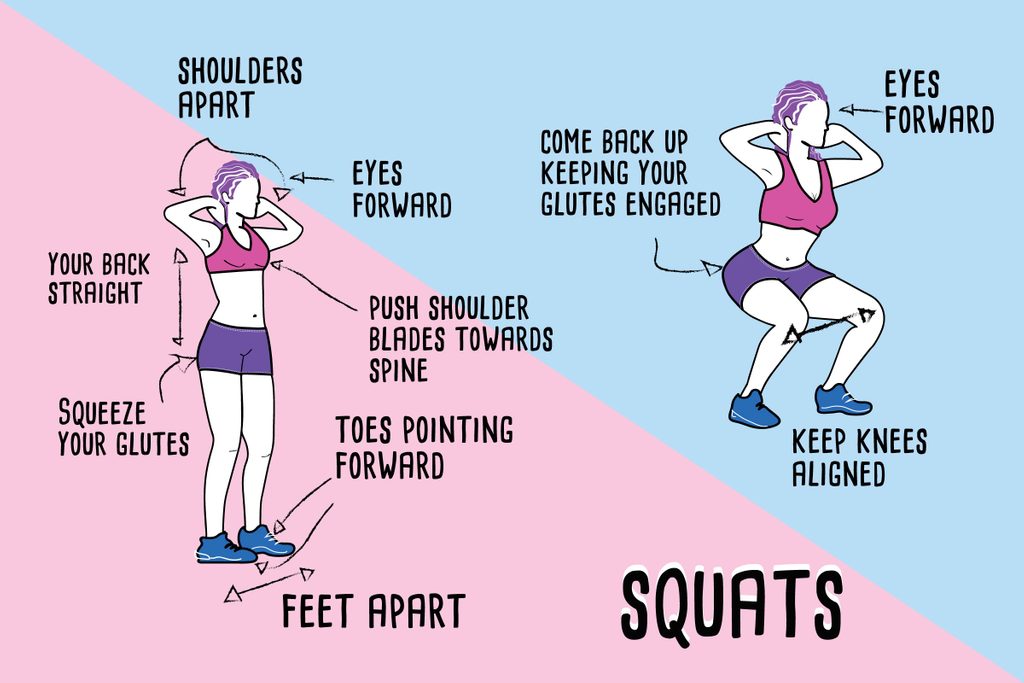Here’s How to Correctly Do a Squat
Updated: Jun. 30, 2022
Proper form is the key to get the most out of your workout.
You may not realize it, but you squat almost every day. You might squat when you grab something from the bottom drawer of your dresser or when you go to pick up your kid. But doing a squat for the purpose of building muscle and controlling your body is something that requires a little more thought. For starters, make sure that you’re not doing these 7 exercises that actually work against you, including squats on a Bosu Ball.
Maurice Williams, owner and head personal trainer of Move Well Fitness in Washington, D.C., says that doing a squat correctly depends on the makeup of your body. “Things such as limb length, flexibility, and past or current injuries can dictate how you squat,” says Williams.
The two muscles to keep in mind when doing a squat are your calves and hips. Making sure that they are stretched and warmed up before you start doing squats is essential. “They are responsible for helping your butt muscles move in and out of the squat. If they are not flexible, your form could be on shaky ground, which could lead to injuries,” says Williams.
To learn how to perfect your form, the National Academy of Sports Medicine outlines these steps to performing the ideal squat:

- Begin by standing with your feet shoulder-width apart, toes pointing forward, your back straight, and your head up with your eyes forward
- Squeeze your glutes and push your shoulder blades towards your spine
- Descend as though you are sitting in a chair, keeping the knees aligned over the second and/or third toes
- Stand back up keeping your glutes engaged and your eyes forward; repeat for as many reps as you want
If you are having trouble maintaining this body position as you squat, there are a few things you can do. Most importantly, get some external support, says Sklar. Do a squat while holding onto TRX (or suspension system) straps, so you’re supported as you sink down and pull yourself back up. You can also do a squat to a bench or chair. Place the box/bench/chair behind you at a height that allows you to lower your hips, tap your butt, and stand up. This should challenge you, but still allow you to stand back up. (You can also try the duck walk exercise to help your squat mobility.)
It’s important to know how to do a squat properly so that you not only get the most out of it. So now that you know how your body should look and what muscles you should be working, try incorporating this technique into the squats you do in your everyday life. When you’re ready to switch it up, try this line-up of squat exercises to tone your body. Just remember the proper form as you work through each variation.
